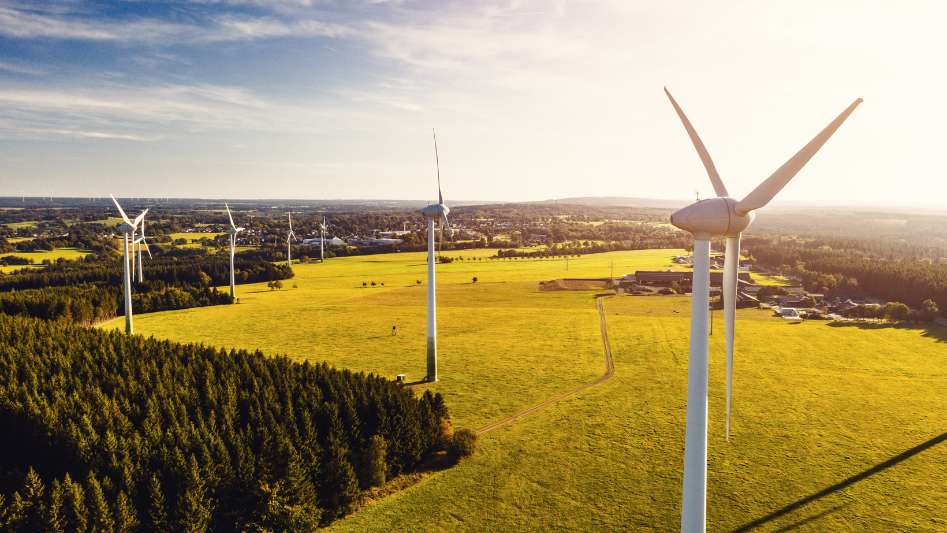Explore the differences in energy density between renewable and non-renewable energy sources and learn how they impact their feasibility for large-scale energy production.
Table Of Content
Introduction
Energy density is a measure of how much energy can be stored in a given mass or volume. It is an important consideration when comparing different sources of energy, as it can affect the practicality and efficiency of energy storage and transportation. In this blog post, we will take a look at the energy density of renewable and non-renewable energy sources.

Energy Density Defined
Energy density is measured in units of energy per unit mass or volume. For example, the energy density of gasoline is around 44 MegaJoules per liter (MJ/L), while the energy density of lithium-ion batteries is around 0.2-0.3 MJ/L. The higher the energy density, the more energy can be stored in a given mass or volume.
Energy Density of Renewable Sources
Renewable energy sources such as solar, wind, and hydroelectricity have relatively low energy densities. Solar energy has an energy density of around 0.001 MJ/L, while wind energy has an energy density of around 0.0004 MJ/L. Hydroelectricity has a higher energy density, around 0.1 MJ/L.
Here is a list of 5 different renewable energy sources and their energy density values.
- Solar energy: around 0.001 MegaJoules per liter (MJ/L)
- Wind energy: around 0.0004 MegaJoules per liter (MJ/L)
- Hydroelectricity: around 0.1 MegaJoules per liter (MJ/L)
- Geothermal energy: around 0.1-0.2 MegaJoules per liter (MJ/L)
- Biomass energy: around 0.2-1 MegaJoules per liter (MJ/L)

It’s important to note that these values can vary depending on the specific technology used for harnessing each renewable energy source. Additionally, energy storage technologies such as batteries and hydrogen fuel cells also have low energy density. However, research and development are ongoing to improve the energy density of these storage methods.
In addition, energy storage technologies such as batteries and hydrogen fuel cells also have low energy density. However, research and development are ongoing to improve the energy density of these storage methods.
Energy Density of Non-Renewable Sources
Non-renewable energy sources such as coal, oil, and natural gas have much higher energy densities. Coal has an energy density of around 29 MJ/L, oil has an energy density of around 44 MJ/L, and natural gas has an energy density of around 55 MJ/L. This is why these resources are more commonly used as a primary source of energy today.
Conclusion
In conclusion, renewable energy sources generally have lower energy densities than non-renewable sources. However, this does not mean that renewable energy is not a viable option. Renewable energy sources such as solar and wind have the advantage of being sustainable and emit no greenhouse gases. Additionally, energy storage technologies are continually improving and research is ongoing to improve the energy density of these storage methods, which could help to overcome the limitations of low energy density of renewable sources.

Frequently Asked Questions
Does low energy density mean that renewable energy sources are not practical?
No, low energy density does not mean that renewable energy sources are not practical. Renewable energy sources such as solar and wind have the advantage of being sustainable and emit no greenhouse gases. Additionally, energy storage technologies are continually improving and research is ongoing to improve the energy density of these storage methods.
Is high energy density always better than low energy density?
Not necessarily. High energy density can be beneficial for energy storage and transportation, but it also raises concerns about safety and environmental impact. For example, high energy density fuels such as oil and natural gas are non-renewable and emit greenhouse gases when burned.
How does energy density affect the cost of energy?
A: The cost of energy is affected by several factors including the cost of production and transportation, as well as the energy density of the source. High energy density sources such as coal and oil are often cheaper to extract and transport, making them more cost-effective than low energy density sources such as solar and wind. However, as renewable energy technology improves and becomes more efficient, the cost of producing and storing renewable energy is also decreasing.
Can energy density be increased for renewable sources?
Yes, research is ongoing to increase the energy density of renewable sources and energy storage methods. For example, scientists are working on developing more efficient solar cells and developing new materials for energy storage, such as lithium-sulfur batteries which have a higher energy density than lithium-ion batteries.
How does energy density affect the environmental impact of energy sources?
High energy density sources such as coal and oil are often extracted and transported using methods that can have a significant environmental impact. In contrast, renewable energy sources such as solar and wind have a lower environmental impact. Additionally, energy storage technologies such as batteries and hydrogen fuel cells also have a lower environmental impact than high energy density fuels.
Can energy density be increased for non-renewable sources?
Increasing energy density for non-renewable sources is not a priority as these sources are finite and non-renewable. Additionally, non-renewable sources have a much higher environmental impact compared to renewable sources. Therefore, it’s more important to focus on developing renewable energy sources and improving energy storage technologies for them.
You May Also Like
- REWIND TO THE FUTURE: HOW CLASSIC MOVIES IMAGINED A WORLD POWERED BY RENEWABLE ENERGY
- FROM SOLAR PANELS TO WIND TURBINES: RENEWABLE ENERGY IN THE CITY
- TOP COUNTRIES WITH HIGHEST PROPORTION OF RENEWABLE ENERGY
- RENEWABLE ENERGY: THE FACTS OF THIS GREEN REVOLUTION
- RENEWABLE ENERGY INVESTMENTS: WHAT IS DRIVING GREEN CAPITALS?
